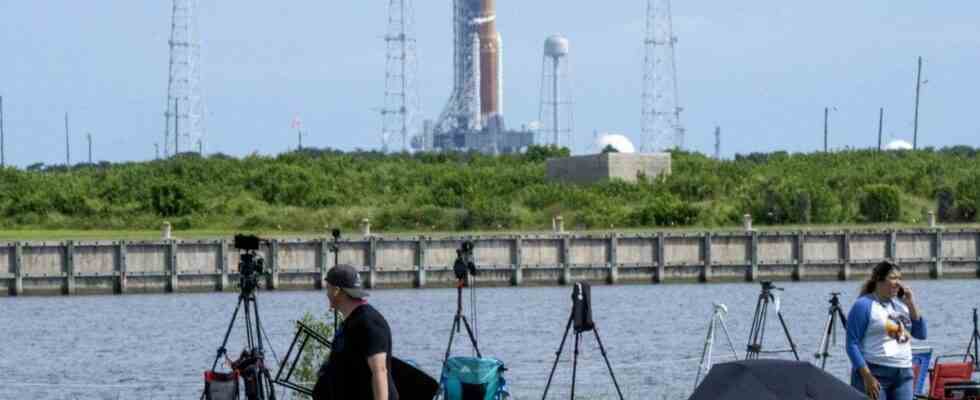Caramba, failed again. The launch of NASA’s new mega-rocket to the Moon was canceled again at the last moment on Saturday, for the second time in less than a week, causing another delay to the launch of the Americans’ flagship return program on the Moon, Artemis.
Liftoff was originally scheduled for 2:17 p.m. local time, with a two-hour launch window. But after more than three hours of trying to resolve a fuel leak during rocket fueling operations, time was running out for launch teams.
A new attempt could possibly take place on Monday or Tuesday. After Tuesday, no new launch possibilities are possible before September 19 due to the position of the Earth and the Moon.
Refueling is not done
Shortly before 6 a.m. local time, the green light was given to begin filling the rocket’s tanks with cryogenic fuel. In total, about three million liters of ultra-cold liquid hydrogen and oxygen.
But around 07:15, a leak was detected at the foot of the rocket, at the level of the pipe through which the hydrogen passes to the tank. The flow was stopped while the teams tried, three times in a row, to solve the problem, “without success”, tweeted NASA.
On Monday, during a first attempt, the launch was also canceled at the last moment due to technical problems, first a similar leak, which had been overcome, then the cooling of the engines.
A distant mission
The orange and white SLS rocket, which should have had its first flight on Saturday, has been in development for more than a decade to become the most powerful in the world. Fifty years after the last Apollo mission, this first test mission, without a crew on board, is the first stage of the Artemis program, the aim of which is to establish a lasting human presence on the Moon, then allowing it to be used as a springboard. towards Mars.
Artemis 1 should make it possible to verify that the Orion capsule, at the top of the rocket, is safe to transport astronauts in the future. Thanks to this new vessel, the American space agency intends to reconnect with distant human exploration, the Moon being 1,000 times further away than the International Space Station.
The trip is expected to last about six weeks in total. Orion will venture up to 64,000 kilometers behind the Moon, farther than any other habitable spacecraft so far.
The main purpose of Artemis 1 is to test the capsule’s heat shield, the largest ever built. On its return to the Earth’s atmosphere, it will have to withstand a speed of 40,000 km/h and a temperature half as hot as that of the surface of the Sun.
In total, the ship must travel some 2.1 million kilometers until it lands in the Pacific Ocean.

